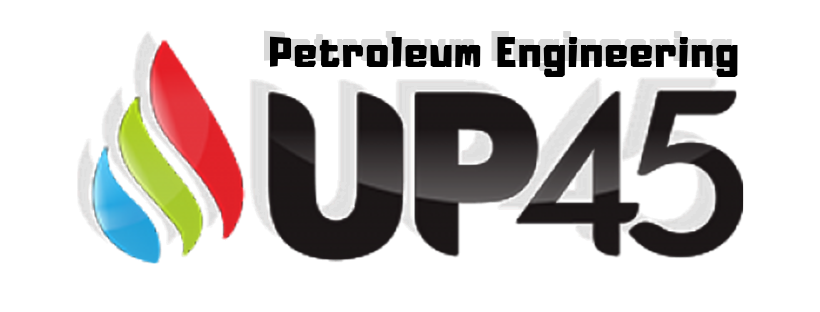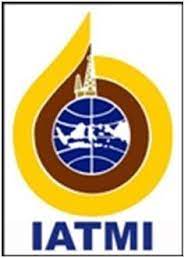Optimasi Hidrolika Sumur “SH” Lapangan “U” Kalimantan Timur dengan Metode Bit Hydroulic Horse Power
(1) Petroleum Engineering, Universitas Proklamasi 45
(*) Corresponding Author
Abstract
Lapangan “U” ditempatkan di Cekungan Tarakan, yang merupakan salah satu daerah cekungan hidrokarbon Kalimantan Timur. Formasi yang ditembus oleh mata bor terdiri dari batupasir, batulanau, batulempung dan batubara. Oleh karena itu, kita perlu mengatur ulang sistem lumpur pengeboran terutama pada sistem hidrolik lumpur pengeboran. Penelitian ini bertujuan untuk mengoptimalkan sistem hidrolik dalam proses pengeboran untuk sumur “SH” Lapangan “U” menggunakan metode Bit Hydraulic Horse Power (BHHP). Hasil dari metode ini adalah untuk menentukan laju alir fluida BHHP yang optimal, daya tembus, ukuran nozzle, dan membandingkan parameter ini dengan data pengeboran aktual sebelum optimasi (data aktual) sehingga penetrasi proses pembentukan juga optimal. Berdasarkan data aktual dari semua pengeboran sumur ke 13 titik kedalaman harus dioptimalkan terutama dalam sistem pengeboran hidrolik dengan mengubah ukuran area aperture pada nozzle bor dan daya sesuai dengan perhitungan.
The "U" field is located in the Tarakan Basin, which is one of the East Kalimantan hydrocarbon basin areas. The formation penetrated by the drill bit consists of sandstone, siltstone, claystone and coal. Therefore, we need to rearrange the drilling mud system, especially in the hydraulic drilling mud system. This study aims to optimize the hydraulic system in the drilling process for "SH" well "U" wells using the Bit Hydraulic Horse Power (BHHP) method. The result of this method is to determine the optimal BHHP fluid flow rate, permeability, nozzle size, and compare these parameters with actual drilling data before optimization (actual data) so that the penetration of the formation process is also optimal. Based on actual data from all wells drilling to 13 points the depth must be optimized especially in the hydraulic drilling system by changing the size of the aperture area on the drill nozzle and the power according to the calculation.
Keywords
Full Text:
PDFReferences
Al-Kayiem, H. H., Zaki, N. M., Asyraf, M. Z., & Elfeel, M. E. 2010. Simulation of the Cuttings Cleaning During the Drilling Operation. American Journal of Applied Sciences, 7(6), 800–806.
Coussot, P., Bertrand, F., & Herzhaft, B. 2004. Rheological Behavior of Drilling Muds , Characterization Using MRI Visualization. Oil & Gas Science and Technology Rev. IFP, 59(1), 23–29.
Guan, Z., Liu, Y., Li, Q., Xu, Y., & Pang, H. 2015. Drilling Hydraulic Parameters Design Method under the Limited Circulating System Bearing Capacity Condition. Journal of Applied Science and Engineering, 18(3), 303–308. http://doi.org/10.6180/jase.2015.18.3.11
Haryono, S., dan Widyawidura, W. 2016. Optimasi Hidrolika Sumur X Lapangan Bunyu Kalimantan Timur dengan Metode Bit Hydroulic Impact. Jurnal Mekanika dan Sistem Termal, Vol. 1(3), Desember 2016: 87-91. Wittig, V., Bracke, R., & Hyun-ick, Y. (2015). Hydraulic DTH Fluid / Mud Hammers with Recirculation Capabilities to Improve ROP and Hole Cleaning For Deep , Hard Rock Geothermal Drilling. In Proceedings World Geothermal Congress 2015 (pp. 19–25).
Kelessidis, V. C., Dalamarinis, P., & Maglione, R. 2011. Experimental Study And Predictions Of Pressure Losses Of Fl Uids Modeled As Herschel – Bulkley In Concentric And Eccentric Annuli In Laminar, Transitional And Turbulent Fl Ows. Journal of Petroleum Science and Engineering, 77, 305–312. http://doi.org/10.1016/j.petrol.2011.04.004
Miguez, L., & Janeiro, R. De. 2011. Hydraulic Study of Drilling Fluid Flow in Circular and Annular Tubes. Brazilian Journal of Petroleum and Gas, 5(4), 239–253. http://doi.org/10.5419/bjpg2011-0023
Noah, A. Z. 2013. Optimizing Drilling Fluid Properties and Flow Rates for Effective Hole Cleaning at High-Angle and Horizontal Wells. Journal of Applied Sciences Research, 9(1), 705–718.
Paiaman, A. M., Al-askari, M. K. G., Salmani, B., & Masihi, M. 2006. Effect of Drilling Fluid Properties on Rate of Penetration. NAFTA, 60(3), 129–134. R. Monicard (1982) Drilling Mud and Slurry Rheology ISBN 2-7108-0420-4 France, 1982.
Rubiandini. R.S., 2010. Hydrolika Lumpur Pemboran. Handbook Drilling Engineering. ITB Bandung 452-731.
Saasen, A., & Løklingholm, G. 2002. The Effect of Drilling Fluid Rheological Properties on Hole Cleaning. In IADC / SPE 74558 Drilling Conference (pp. 1–5). Texas. Samsuri, A., & Hamzah, A. (2011). Water based mud lifting capacity improvement by multiwall carbon nanotubes additive. Journal of Petroleum and Gas Engineering, 2(5), 99–107.
DOI: https://doi.org/10.30588/jo.v2i2.399
Article Metrics
Abstract view : 729 timesPDF - 4 times
Refbacks
- There are currently no refbacks.
Copyright (c) 2018 Sri Haryono



.jpg)










.png)